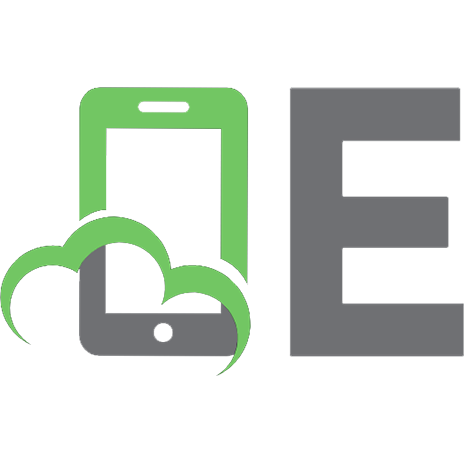NLP with Python: 3 Books in 1 - "From Beginner to Advanced: The Future Frontier and Next-Gen Solutions
Embark on a transformative journey through the intricate world of Natural Language Processing (NLP) with Python, as we u
156 12
English Year 2023
Table of contents :
Introduction
Chapter One: Basics of Natural Language Processing (NLP)
Chapter Two: Setting Up the Python Environment for NLP
Chapter Three: Text Preprocessing and Cleaning
Chapter Four: Basic Text Analysis
Chapter Five: Part-of-Speech (POS) Tagging and Named Entity Recognition (NER)
Chapter Six: Sentiment Analysis
Chapter Seven: Introduction to Machine Learning for NLP
Chapter Eight: Working with Python NLP Libraries
Chapter Nine: Word Embeddings and Vectorization
Chapter Ten: Basic Concepts of Deep Learning in NLP
Chapter Eleven: Building a Simple NLP Application
Chapter Twelve: Challenges and Limitations in NLP
Chapter Thirteen: Expanding Your NLP Horizons
Conclusion
Introduction
Chapter One: Comprehensive Overview of NLP Libraries in Python
Chapter Two: spaCy: In-depth Analysis and Advanced Techniques
Chapter Three: Advanced Text Processing with TextBlob
Chapter Four: Gensim: Exploring Topic Modeling and Document Similarity
Chapter Five: Transformers and BERT in Python
Chapter Six: Advanced Machine Learning Models for NLP
Chapter Seven: Deep Learning Frameworks: TensorFlow and PyTorch for NLP
Chapter Eight: Seq2Seq Models and Neural Machine Translation
Chapter Nine: Speech Processing and Recognition with Python
Chapter Ten: Multi-modal NLP: Integrating Text, Voice, and Image
Chapter Eleven: Optimization and Scaling of NLP Applications
Chapter Twelve: Addressing Ethical Concerns in NLP
Chapter Thirteen: Multilingual and Cross-lingual NLP in Python
Chapter Fourteen: Advanced NLP Projects and Case Studies
Conclusion
Introduction
Chapter One: The Evolution of NLP Algorithms
Chapter Two: Advanced Transformer Architectures
Chapter Three: Neural Architecture Search (NAS) in NLP
Chapter Four: Reinforcement Learning in NLP
Chapter Five: Zero-Shot, Few-Shot, and Transfer Learning in NLP
Chapter Six: Generative NLP and Text Synthesis
Chapter Seven: Advanced Multi-modal and Cross-modal NLP
Chapter Eight: Quantum NLP: Merging Quantum Computing with Linguistics
Chapter Nine: Advanced Optimization Techniques for NLP
Chapter Ten: Knowledge Graphs and Semantic Networks in NLP
Chapter Eleven: Neuro-Linguistic Programming vs. Natural Language Processing
Chapter Twelve: NLP in Augmented Reality (AR) and Virtual Reality (VR)
Chapter Thirteen: Adversarial Attacks and Defense in NLP
Chapter Fourteen: Personalizing NLP Applications
Chapter Fifteen: Beyond 2023: Predicting the Next Wave in NLP
Conclusion
Introduction
Chapter One: Basics of Natural Language Processing (NLP)
Chapter Two: Setting Up the Python Environment for NLP
Chapter Three: Text Preprocessing and Cleaning
Chapter Four: Basic Text Analysis
Chapter Five: Part-of-Speech (POS) Tagging and Named Entity Recognition (NER)
Chapter Six: Sentiment Analysis
Chapter Seven: Introduction to Machine Learning for NLP
Chapter Eight: Working with Python NLP Libraries
Chapter Nine: Word Embeddings and Vectorization
Chapter Ten: Basic Concepts of Deep Learning in NLP
Chapter Eleven: Building a Simple NLP Application
Chapter Twelve: Challenges and Limitations in NLP
Chapter Thirteen: Expanding Your NLP Horizons
Conclusion
Introduction
Chapter One: Comprehensive Overview of NLP Libraries in Python
Chapter Two: spaCy: In-depth Analysis and Advanced Techniques
Chapter Three: Advanced Text Processing with TextBlob
Chapter Four: Gensim: Exploring Topic Modeling and Document Similarity
Chapter Five: Transformers and BERT in Python
Chapter Six: Advanced Machine Learning Models for NLP
Chapter Seven: Deep Learning Frameworks: TensorFlow and PyTorch for NLP
Chapter Eight: Seq2Seq Models and Neural Machine Translation
Chapter Nine: Speech Processing and Recognition with Python
Chapter Ten: Multi-modal NLP: Integrating Text, Voice, and Image
Chapter Eleven: Optimization and Scaling of NLP Applications
Chapter Twelve: Addressing Ethical Concerns in NLP
Chapter Thirteen: Multilingual and Cross-lingual NLP in Python
Chapter Fourteen: Advanced NLP Projects and Case Studies
Conclusion
Introduction
Chapter One: The Evolution of NLP Algorithms
Chapter Two: Advanced Transformer Architectures
Chapter Three: Neural Architecture Search (NAS) in NLP
Chapter Four: Reinforcement Learning in NLP
Chapter Five: Zero-Shot, Few-Shot, and Transfer Learning in NLP
Chapter Six: Generative NLP and Text Synthesis
Chapter Seven: Advanced Multi-modal and Cross-modal NLP
Chapter Eight: Quantum NLP: Merging Quantum Computing with Linguistics
Chapter Nine: Advanced Optimization Techniques for NLP
Chapter Ten: Knowledge Graphs and Semantic Networks in NLP
Chapter Eleven: Neuro-Linguistic Programming vs. Natural Language Processing
Chapter Twelve: NLP in Augmented Reality (AR) and Virtual Reality (VR)
Chapter Thirteen: Adversarial Attacks and Defense in NLP
Chapter Fourteen: Personalizing NLP Applications
Chapter Fifteen: Beyond 2023: Predicting the Next Wave in NLP
Conclusion

- Similar Topics
- Computers
- Algorithms and Data Structures: Pattern Recognition









![Solutions Manual to Advanced Regression Models with SAS and R [1 ed.]](https://ebin.pub/img/200x200/solutions-manual-to-advanced-regression-models-with-sas-and-r-1nbsped.jpg)